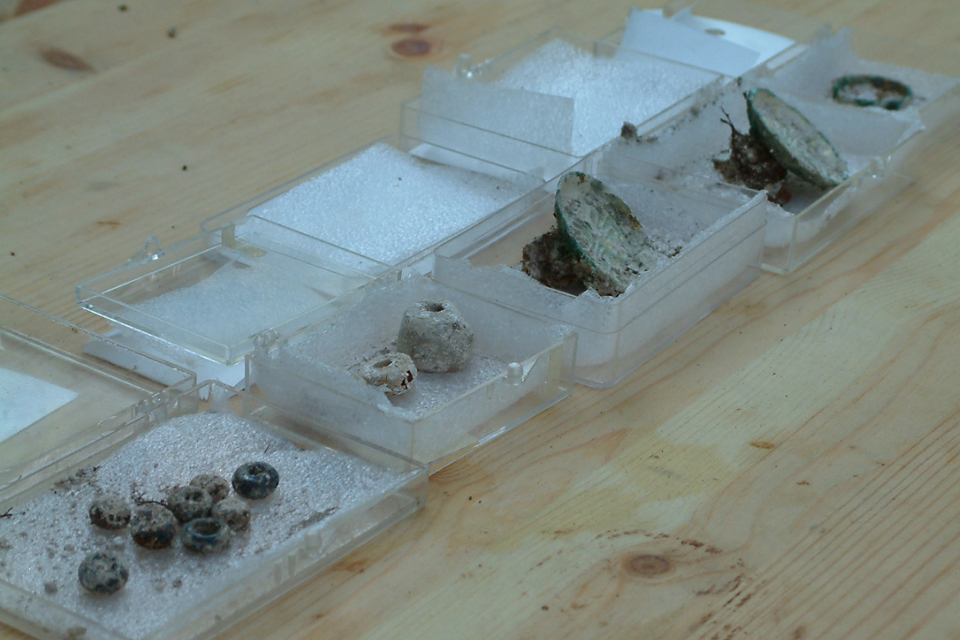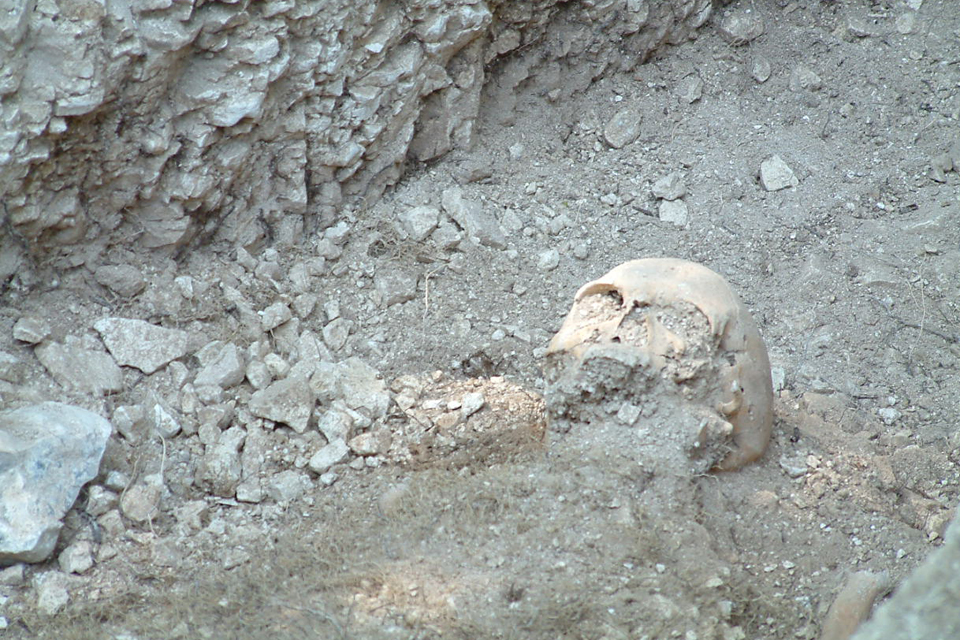Soldiers take part in award-winning archaeology project
An award-winning project which uses archaeology to aid the recovery of injured soldiers is continuing its success on Salisbury Plain.
![A soldier from The Rifles carefully excavates a skeleton at Barrow Clump [Picture: Crown copyright]](https://assets.publishing.service.gov.uk/government/uploads/system/uploads/image_data/file/13611/s300_DSCF0008g.jpg)
A soldier from The Rifles carefully excavates a skeleton
The Defence Infrastructure Organisation (DIO) worked with The Rifles to create the unique and hugely successful programme known as Operation Nightingale, which helps soldiers injured in Afghanistan return to their regiment or prepare for civilian life.
The project also helps the Ministry of Defence fulfil its statutory obligations and has been recognised by the British Archaeological Awards for its innovation.
It receives considerable funding from Care for Casualties, The Rifles Appeal, which supports wounded Riflemen.
Operation Nightingale is currently in the second of 3 stages of excavation work at Barrow Clump. Current work centres around a Saxon cemetery dating back to the 6th century AD.
So far objects unearthed include a spear, shield, gold leaf brooches and beads. The team has also uncovered around 18 skeletons thought to be men, women and children from the Anglo-Saxon period.
DIO and the Defence Archaeology Group worked with The Rifles and a number of other units to give injured military personnel the opportunity to learn a series of excavation, land survey, drawing and mapping techniques.
The soldiers, who join the programme voluntarily, also produce a report of their findings which helps enhance their publication and presentation skills.

Some of the finds discovered so far during excavations of Barrow Clump on Salisbury Plain [Picture: Crown copyright]
Dave Hart, a newly-qualified primary school teacher, formerly from 6th Battalion The Rifles, said:
I have always had an interest in archaeology, so I jumped at the chance to be involved in this project. Not only does the project give me the opportunity to get involved in something really interesting, but it also enables me to get back into a military-style environment and be back working with soldiers.
The camaraderie between the volunteers on the site here is phenomenal – we work hard during the day and utilise our skills for the benefit of the project but we also get the opportunity to socialise and have some fun.
Volunteering here has also benefited me in my job. I’ve been able to take my hands-on experiences and share them with the children at the school I teach in – it really excites and enthuses them and there’s nothing better than personal stories to get children really interested in subjects and bring topics to life.
The latest dig follows on from the first excavation last year which saw soldiers taking part in the discovery of 27 bodies – including Anglo-Saxon warriors, buried with a range of personal possessions and artefacts including shield bosses, guilded brooches, amber and glass beads, spearheads, a silver ring, and a wooden drinking vessel with bronze bands.
Objects unearthed at the dig will be deposited in the Wiltshire Heritage Museum in Devizes.
Co-directed by Richard Osgood, DIO’s Senior Historic Advisor, and Sergeant Diarmaid Walshe of the Royal Army Medical Corps, the project draws in assistance from partners including Wessex Archaeology and Cranfield University.

One of over 60 skeletons unearthed in the Bronze Age and Anglo-Saxon burial ground [Picture: Crown copyright]
Sergeant Walshe said:
What we’re doing here is providing a recovery activity where we bring together serving soldiers and veterans who have been injured. We can help to rebuild their self-esteem and provide them with a sense of purpose.
The key to the success of the project is that we undertake lots of different activities, from digging to surveying, photography, finds processing and other hands-on activities. The dig also provides the opportunity to get engaged and involved in a project that adds real value to the military estate.
Additionally one of our objectives is to give something back to the local community. The local community around Salisbury Plain have shown amazing support for the project and worked alongside our Service personnel while we have been here.
Richard Osgood said:
DIO’s priority is to support our Armed Forces and this project continues to be a great success. Over the past few months the team of volunteers has unearthed several more skeletons and various artefacts including 6th century brooches and glass beads.
Although the Bronze Age and Anglo-Saxon burial ground is relatively small we have already unearthed over 60 skeletons.
Thanks to the hard work and dedication of the Op Nightingale volunteers Barrow Clump has now been put firmly on the archaeological map. This is thanks to the hard work of the serving soldiers and ex-soldiers from the British Armed Forces.
Phil Andrews, Project Manager at Wessex Archaeology, said:
The archaeology project here at Barrow Clump is different in that it offers more than just the opportunity to dig. It allows the soldiers the chance to learn about various parts of archaeology such as recording, planning and drawing. Everyone finds a role that suits them and each has a useful part to play.
The project also offers the soldiers far more than a ‘normal’ archaeological dig in that it enables them to build and develop their social and personal skills, something which is special and rather unique to this project.